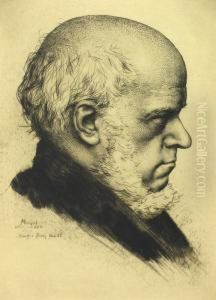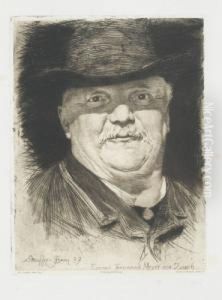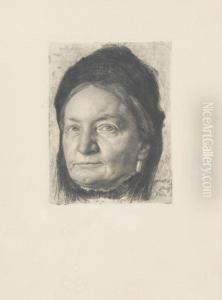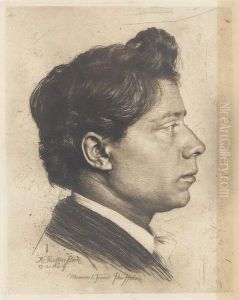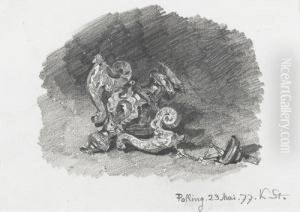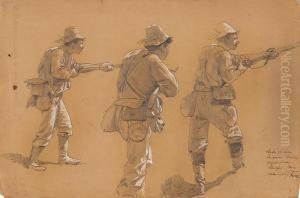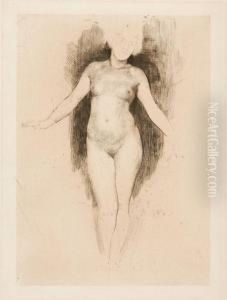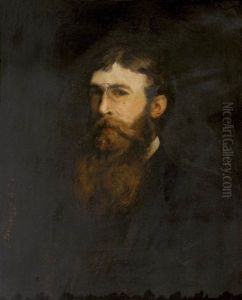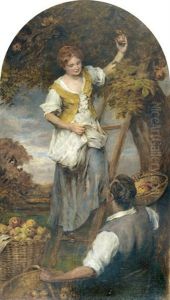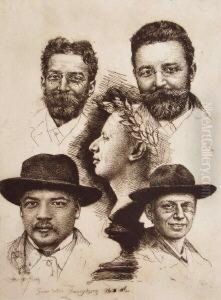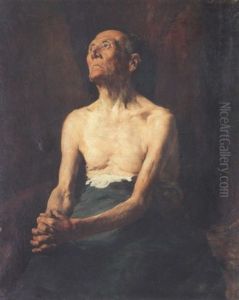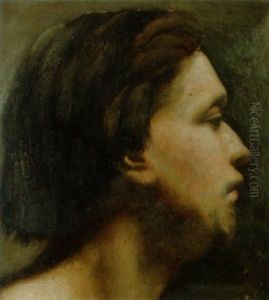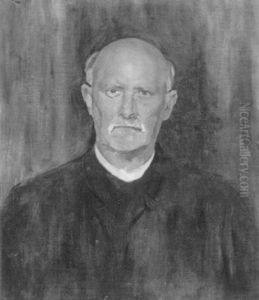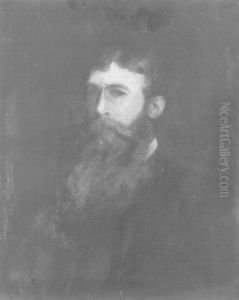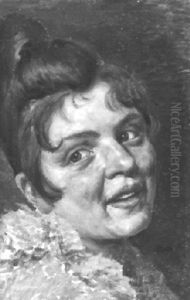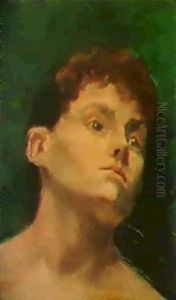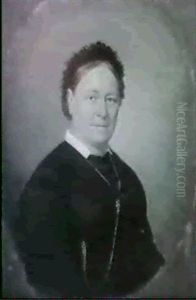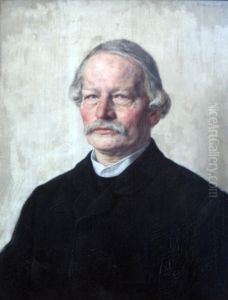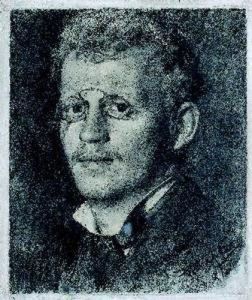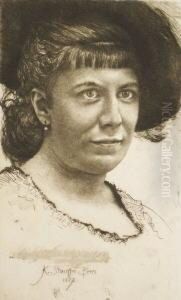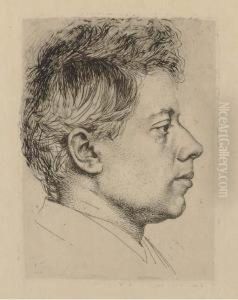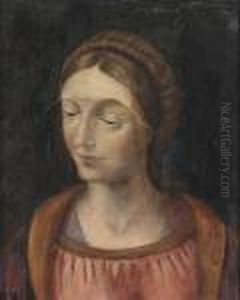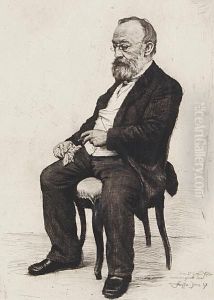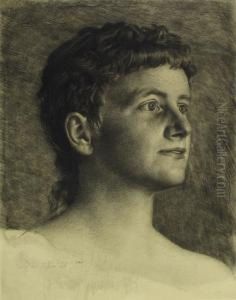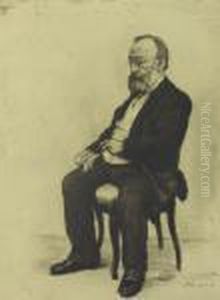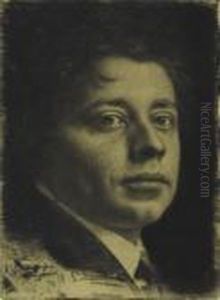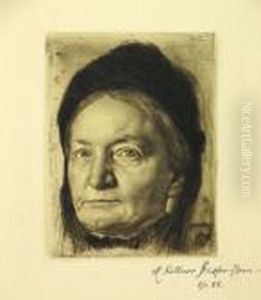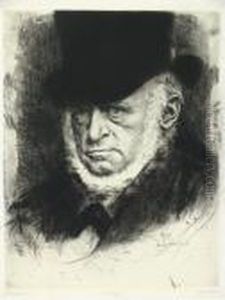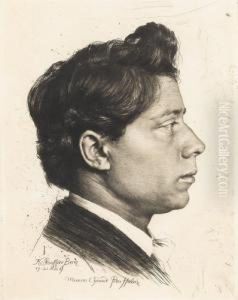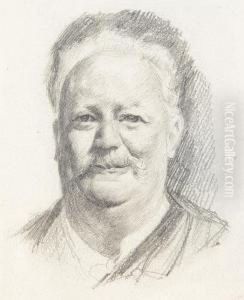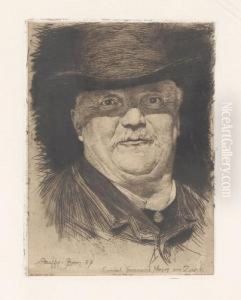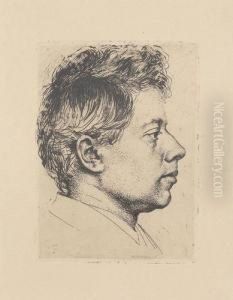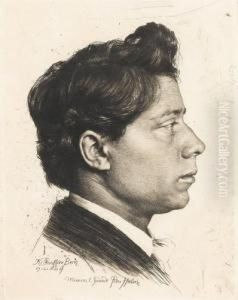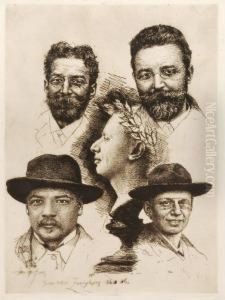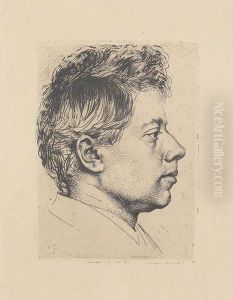Karl Stauffer-Bern Paintings
Karl Stauffer-Bern was a Swiss painter, etcher, and sculptor born on September 2, 1857, in Trubschachen, in the Emmental region of Switzerland. He showed an early interest in the arts and began his formal training at the age of sixteen at the School of Arts and Crafts in Bern. He continued his studies in Geneva and later in Paris, where he was influenced by the contemporary French art scene, particularly the works of the realist painters.
After his time in Paris, Stauffer-Bern returned to Switzerland and established himself as a portraitist and sculptor. He gained recognition for his etchings and was considered one of the leading Swiss etchers of his time. His portraits were known for their psychological depth and detailed characterization, often capturing the complex emotions and inner lives of his subjects. Stauffer-Bern was also involved in the revival of the art of medal engraving in Switzerland.
In the early 1880s, Stauffer-Bern went to Italy, where he became deeply inspired by the Italian Renaissance. He spent significant time in Florence, immersing himself in the study of the old masters. During this period, he produced a series of works that reflected his fascination with the Italian art and landscape, which included not only paintings and etchings but also medallions with portraits of famous Italian personalities.
Stauffer-Bern's life took a tragic turn when he became involved in a scandalous affair with Lydia Welti-Escher, the wife of a prominent Swiss politician and the daughter of the Swiss national hero Alfred Escher. The affair led to a very public trial that scandalized Swiss society. Stauffer-Bern was arrested and imprisoned under suspicious circumstances. His health deteriorated rapidly during his incarceration, leading to his untimely death on January 24, 1891, in Florence, at the age of 33.
Despite his short life, Karl Stauffer-Bern left behind a significant body of work that continues to be appreciated for its emotional intensity and technical skill. His contribution to Swiss art, particularly in the field of printmaking and portrait painting, remains influential, and his works are held in numerous Swiss museums and collections.
